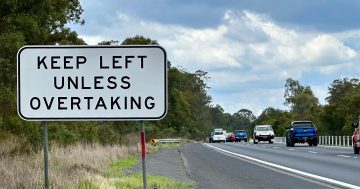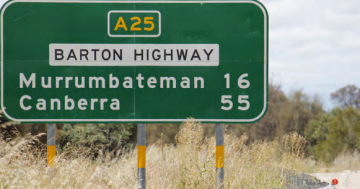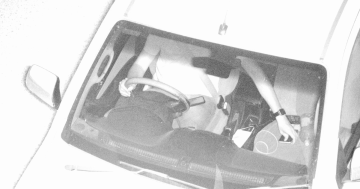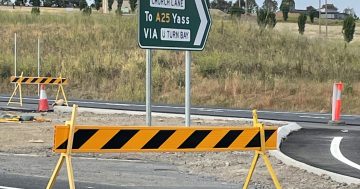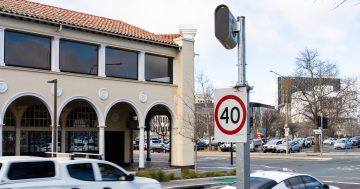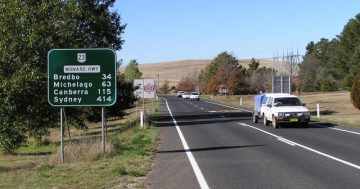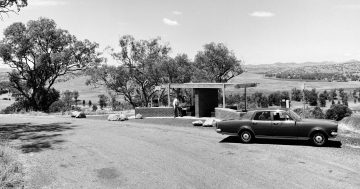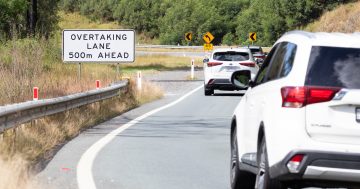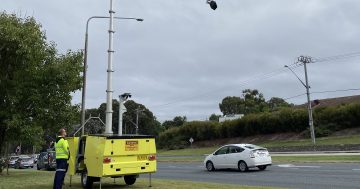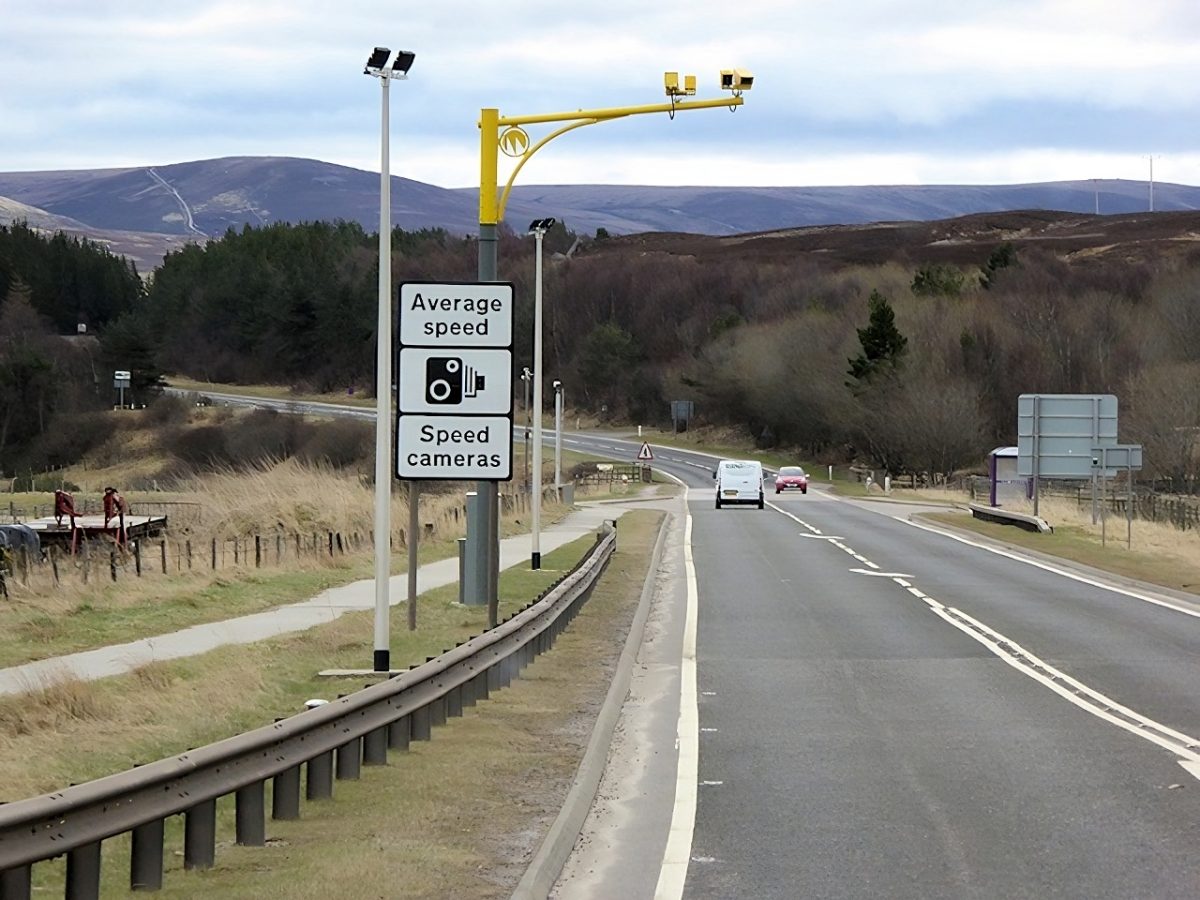
An average speed camera warning sign in Scotland. This could become a common sight in NSW. Photo: David Dixon.
The NSW Government is introducing a creative new regime to extract more money from drivers through fines.
It’s planning to trial ‘average speed’ detectors in regional areas, whereby it installs cameras at two points on a highway, records you at both spots and then hits you with a penalty notice if your average speed between those points exceeds the limit.
While a pair of point-to-point cameras already exists on Hindmarsh Drive in Canberra, I don’t see a case for NSW following the ACT’s lead. The move will disproportionately hurt rural drivers and is being introduced by a state government that won’t fulfil its side of the bargain by improving our regional transport network.
You can just imagine the conversations that might have gone on between the NSW Roads Minister and his bureaucrats before coming up with this idea:
Should we do something about all the potholes on our roads that led to 12,000 vehicles damaging their wheels and calling NRMA for roadside assistance in April and May? Nah.
What about upgrading our rail freight network so we don’t have so many trucks clogging up regional highways? Forget it, too expensive.
Shall we consider installing warning lights at all railway crossings so we stop seeing vehicles crashing into trains? Don’t like that either.
“I’ve got a better idea,” I imagine some clever bureaucrat saying. “We only make about $1 billion a year on penalty notices. Let’s raise even more revenue by introducing a whole new category of offence, where we nail drivers not only for speeding at a point in time but also track them over a long distance and bust them for average speed breaches. That’s perfect.”
While point-to-point speed cameras are already used for heavy vehicles in NSW, expanding their remit to all drivers will hurt those of us who live in the bush most of all. We are the ones that travel long distances in cars – often to access services and jobs that governments have stripped away from rural towns.
Naturally, the NSW Government has chosen two regional areas to trial this new scheme, on the Pacific Highway between Kew and Lake Innes, and the Hume Highway between Coolac and Gundagai.
I can hear what city-based supporters of average speed breach fines might say in response – ‘it’s simple, don’t ever speed and you won’t ever get fined’.
In reality, it’s not that simple. If a driver doesn’t want to be stuck behind a semi-trailer going at 95 km/h on the Burley Griffin Way all afternoon, he may have to marginally exceed the speed limit to overtake.
Perhaps you think there’s no exceptions, drivers should never speed and if you’re stuck behind a truck, it’s bad luck. But if that’s the case, don’t governments also have a responsibility to improve traffic safety?
For the past two decades, federal and state governments have done a woeful job maintaining and upgrading regional roads, preferring to spend our taxes on stadiums, museums and light rail in big cities. As a result, there are safety hazards all over regional road networks that put lives at risk.
The burden for reducing our road toll is disproportionately falling on rural residents, who are hit with higher and more frequent financial penalties while struggling with the rising cost of living.
My message to the NSW government is simple – before you bring in average speed cameras, do your job first and address the disgraceful state of country roads.
Original Article published by Oliver Jacques on Region Riverina.












